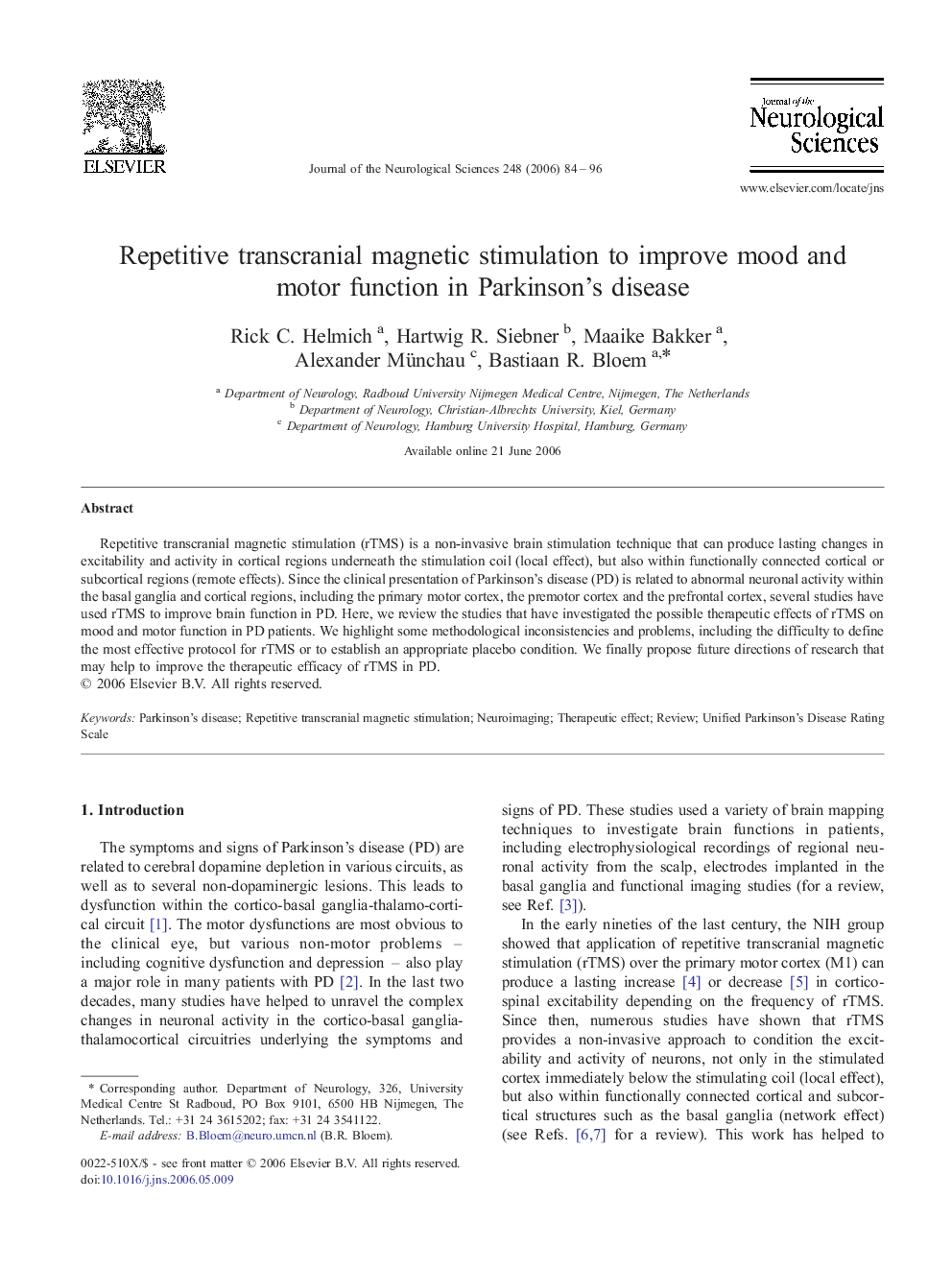| Article ID | Journal | Published Year | Pages | File Type |
|---|---|---|---|---|
| 1916693 | Journal of the Neurological Sciences | 2006 | 13 Pages |
Repetitive transcranial magnetic stimulation (rTMS) is a non-invasive brain stimulation technique that can produce lasting changes in excitability and activity in cortical regions underneath the stimulation coil (local effect), but also within functionally connected cortical or subcortical regions (remote effects). Since the clinical presentation of Parkinson's disease (PD) is related to abnormal neuronal activity within the basal ganglia and cortical regions, including the primary motor cortex, the premotor cortex and the prefrontal cortex, several studies have used rTMS to improve brain function in PD. Here, we review the studies that have investigated the possible therapeutic effects of rTMS on mood and motor function in PD patients. We highlight some methodological inconsistencies and problems, including the difficulty to define the most effective protocol for rTMS or to establish an appropriate placebo condition. We finally propose future directions of research that may help to improve the therapeutic efficacy of rTMS in PD.
